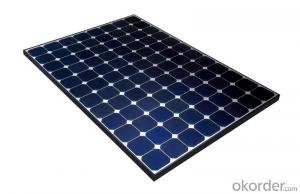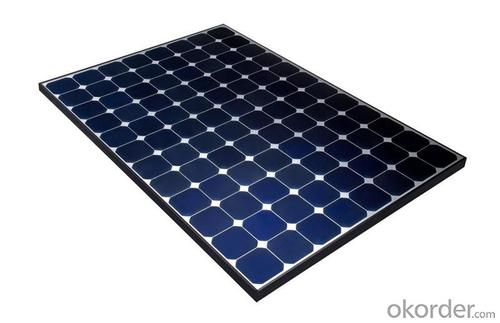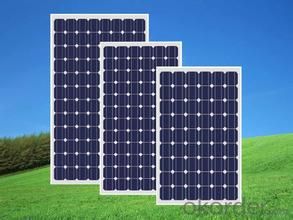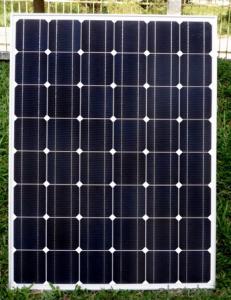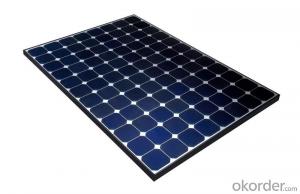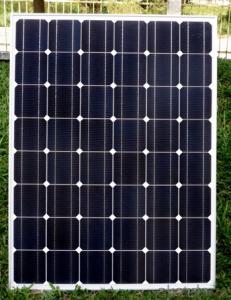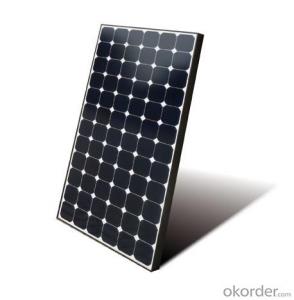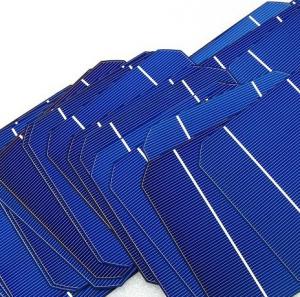Hobby Solar Cells - Poly Solar Panel 100W A Grade with 12 Years Warranty
- Loading Port:
- Shanghai
- Payment Terms:
- TT OR LC
- Min Order Qty:
- 100 watt
- Supply Capability:
- 1000 watt/month
OKorder Service Pledge
OKorder Financial Service
You Might Also Like
Specification
Poly Solar Panel 100W A Grade with 12 Years Warranty
Production description
PV systems range from small, rooftop-mounted or building-integrated systems with capacities from a few to several tens of kilowatts, to large utility-scale power stations of hundreds of megawatts. Nowadays, most PV systems are grid-connected, while off-grid or stand-alone systems only account for a small portion of the market.The International Energy Agency projected in 2014 that under its "high renewables" scenario, by 2050, solar photovoltaics and concentrated solar power would contribute about 16 and 11 percent, respectively, of the worldwide electricity consumption, and solar would be the world's largest source of electricity. Most solar installations would be in China and India.[2]
It may also use a solar tracking system to improve the system's overall performance and include an integrated battery solution, as prices for storage devices are expected to decline. Strictly speaking, a solar arrayonly encompasses the ensemble of solar panels, the visible part of the PV system, and does not include all the other hardware, often summarized as balance of system (BOS). Moreover, PV systems convert light directly into electricity and shouldn't be confused with other technologies, such as concentrated solar power or solar thermal, used for heating and cooling.
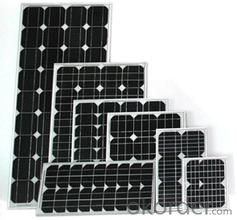
Application
Commercial
Industrial
Residential
Product Feature
12 years quality warranty 25 years performance output.
Free for less than 5 pcs sample requirement
Free to replace or repair or refund if products fail to conform to the PI requirement.
Packaging
28pcs into carton 2carton into pallets 28pallets into a 40ft container
Delivery
After 25 days for manufacturered goods as soon as we received full payment.
After 10 days for stock goods as soon as we received full payment.
- Q: Can solar cells be used for powering concert venues?
- Yes, solar cells can be used for powering concert venues. Solar panels can be installed on the rooftops or surrounding areas of the venue to harness sunlight and convert it into electricity. This renewable energy source can help reduce reliance on traditional power grids and decrease carbon emissions associated with concert operations. While the size and capacity of the solar system would depend on the energy needs of the venue, it is a viable option for powering concert venues in a sustainable and environmentally friendly manner.
- Q: How do solar cells handle bird droppings or other debris?
- Solar cells can be affected by bird droppings or debris as they can block sunlight from reaching the cells, reducing their efficiency. Regular cleaning and maintenance are essential to ensure optimal performance of solar cells and prevent any potential issues caused by bird droppings or debris.
- Q: How much space is required to install a solar cell system?
- The space required to install a solar cell system depends on various factors such as the capacity of the system, the type of solar panels used, and the available sunlight. Generally, a small residential solar system can be installed on a rooftop or an area of about 100-200 square feet, while larger commercial or utility-scale systems can require several acres of land.
- Q: Can solar cells be used in electric fences?
- Yes, solar cells can be used in electric fences. They can be used to power the fence's energizer, which delivers an electric shock to deter animals or intruders. Solar cells are efficient in converting sunlight into electricity, making them a sustainable and cost-effective solution for powering electric fences in remote locations without access to the grid.
- Q: Solar panel resistance is changed with what
- the main elements involved in the battery, the internal electrode wire, as well as external links cable. These elements have a common characteristic, that is, at low temperatures, the resistance value will all become smaller, so the conclusion is: in the same radiation intensity,
- Q: How do solar cells perform in different climates?
- Solar cells can perform well in a variety of climates, although their efficiency may vary. In sunny climates, solar cells generally produce more electricity due to the abundance of sunlight. However, even in cloudy or cold climates, solar cells can still generate a significant amount of power, albeit at a slightly reduced efficiency. Overall, solar cells can function effectively in different climates and contribute to renewable energy generation.
- Q: How long does it take to make a solar cell?
- 1-2 days.
- Q: Can solar cells be used for powering remote medical clinics?
- Yes, solar cells can be used for powering remote medical clinics. Solar energy is a reliable and sustainable source of power that can be harnessed in remote areas where access to electricity is limited. By installing solar panels, medical clinics can generate electricity to power essential medical equipment, lighting, and other necessary devices, ensuring continuous operations and better healthcare services even in remote locations.
- Q: How do solar cells impact job creation?
- Solar cells impact job creation by creating a demand for skilled workers in the solar industry. As the adoption of solar energy grows, more jobs are created in manufacturing, installation, maintenance, and research and development of solar cells. This not only helps stimulate the economy but also provides employment opportunities for individuals in a rapidly expanding sector.
- Q: Can solar cells be used for powering disaster relief operations?
- Yes, solar cells can be used for powering disaster relief operations. Solar cells are a reliable source of renewable energy that can provide electricity to critical facilities such as hospitals, shelters, and communication systems in disaster-affected areas. They are portable, easy to deploy, and can operate independently from the grid, making them ideal for emergency situations where power supply is disrupted. Solar-powered systems can also reduce reliance on fossil fuels, mitigate environmental impact, and ensure a sustainable energy solution during disaster relief operations.
Send your message to us
Hobby Solar Cells - Poly Solar Panel 100W A Grade with 12 Years Warranty
- Loading Port:
- Shanghai
- Payment Terms:
- TT OR LC
- Min Order Qty:
- 100 watt
- Supply Capability:
- 1000 watt/month
OKorder Service Pledge
OKorder Financial Service
Similar products
Hot products
Hot Searches
Related keywords
